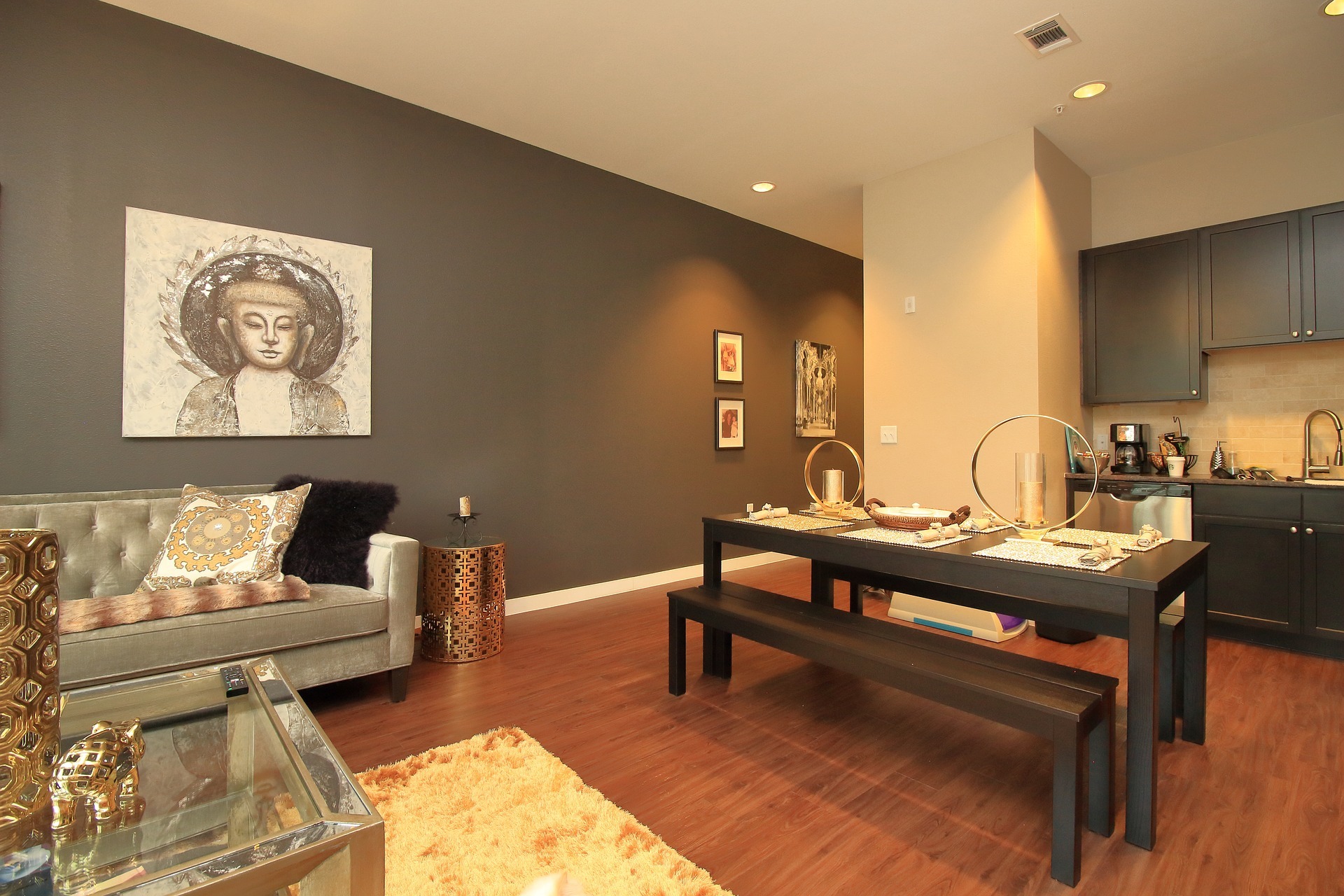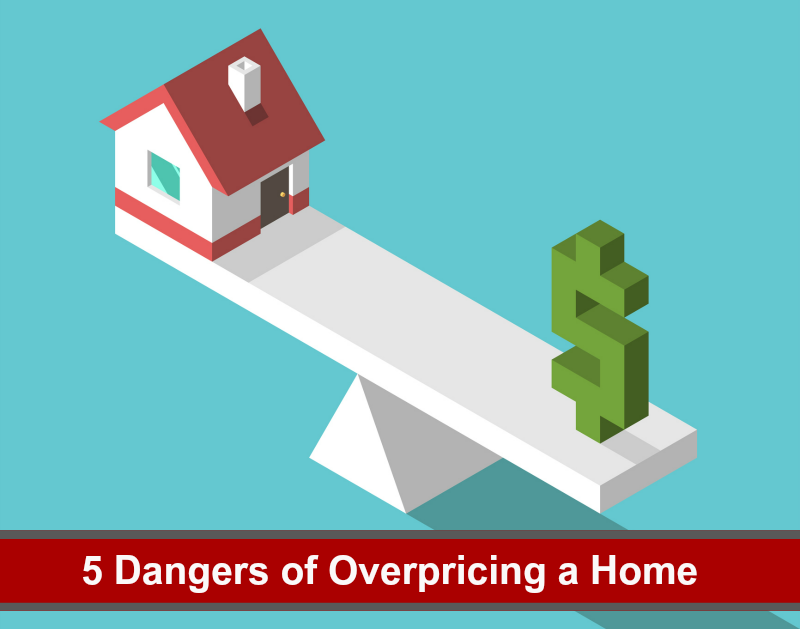Social Links Widget
Click here to edit the Social Media Links settings. This text will not be visible on the front end.
Planning for the Future: Housing Options to Consider

Posted in Buying and Selling by Tara Sharp

It should come as no surprise that 75% of the senior citizens polled in the latest AARP Preferences survey strongly agreed with the statement, “What I’d like to do is stay in my current residence as long as possible.” After all, home is where the heart is; and the longer you live in a place, the stronger your attachment to it becomes.
But it’s important for those over 50 to assess potential lifestyle modifications that may be necessary down the road well in advance, because many will require significant research and preparation.
Whether you are planning for your own future or that of a loved one, analyzing new housing options before a change becomes necessary will help ensure you have the greatest number of options with the least amount of stress. Here are some considerations to help guide you or your loved one through the process.
Location and size
In planning for the future, communication with all involved parties is key to understanding where you or the senior in your life wants to be. Many seniors want to be close to family and friends. Proximity or access to basic needs is also a critical consideration, especially for those who no longer drive.
Once an area is chosen, think about how much space is needed. Most seniors choose to downsize to a smaller home, and here are many advantages to this. A smaller home generally means less maintenance, lower mortgage or rental costs, and lower taxes. Less space can also be easier to manage. Single-level homes are a good option for those with decreased mobility and can help reduce the likelihood of falls and injuries. You’ll also want to consider whether a yard is needed, and whether you’d need someone else to maintain it.
Multi-family home
Multi-family homes, such as condominiums, cooperatives and townhomes, are well-suited for senior living, offering many options for budgets, maintenance and amenities. But most people don’t fully understand the differences between them.
Condominiums and cooperatives offer benefits of homeownership, but allow for certain expenses to be shared by all owners. Other benefits include security, shared building insurance and possible onsite amenities. Monthly fees are collected in both condominiums and cooperatives to maintain the property and any amenities, and both have elected boards of representatives who meet regularly to review operating expenses and building issues. Condominium ownership is based only on the unit, with taxes paid by the owner. In cooperatives, owners are shareholders, giving them sole rights and equity of their unit, but property taxes are shared by the building and included in your monthly fees.
Townhomes, on the other hand, allow for ownership of the structure and the land it sits on (front and back yards). Most are designed as row-houses, with one or two common walls. For those who prefer the legal rights of single-family ownership and do not want to pay monthly dues and do not want to pay monthly dues, a townhome may be the best option.
Drawbacks of multi-family homes can include noise from shared walls or floors, homeowner’s associations, monthly fees and CC&Rs (covenants, conditions and restrictions).
Renting
Renting can be a good way to avoid home ownership costs and maintenance. It may also be a more affordable way to live in a desirable area. Cons of renting can include noise through shared walls, the potential for your rent to increase over time, difficult or unreliable landlords, inattention to maintenance issues, and the possibility that you may need to move if the property is sold. It’s a good idea to talk to one or more current tenants of the rental to find out what their experience has been with the property and the landlord.
Alternative senior living options: independent and assisted
Another solution to consider for yourself or your family member is independent living communities (also called senior apartments, retirement communities, retirement communities, retirement homes and senior housing). Independent living communities provide privacy, independence, and the opportunity to connect with others without the demands of home ownership. They are usually full-service, offering meals, housekeeping, transportation and social activities.
For those who struggle with day-to-day living responsibilities, it may be time to consider assisted living arrangements. Some options include Adult Day Care, Elder Cottage Housing Opportunities (ECHO), Group Home, Special Care Unit (SCU) or Nursing Homes. Your state human resources department can usually provide more information about these options in your community and offer help with referrals, or you can opt for private referral services.
Financial factors
The costs for alternative housing can add up quickly—especially as the need for assistance increases. Medicare, unfortunately, does not pay for housing; but under strict financial restrictions, Medicaid may. To get a better feel for just how much these living arrangements can cost, visit GenWorth.com and search the cost of long term care where you live.
If the choice is made not to move, you could consider a reverse mortgage. This allows homeowners over the age of 65 to tap into their home equity in lieu of a monthly payment, with no repayment necessary as long as the property is their principal residence and they meet all the terms of the agreement. Keep in mind, however, that if the owner sells the home, dies, or does not meet the terms of the agreement, they or their family will be required to pay the remaining balance of the loan.
Some states offer assistance with property tax, or special assessments for seniors based on age, disability and household income. Check with your State Department of Revenue to see what options exist in your state and whether you qualify. Long-term care insurance is another option. An LTC policy will help pay for the costs not covered by traditional health insurance or Medicare (which can include assistance with daily-living activities, as well as the care provided in a variety of living/care facilities).
For more help and information
Your Windermere Real Estate agent can help you make the transition when the time is right by assessing the local property market, helping you properly price homes for sale, and finding a new home that best meets the unique needs of you or your loved ones.
Why So Many Americans Are Either Upsizing or Downsizing

Posted in Buying, Selling, and Living by Shelley Rossi

According to two recent surveys that took industry watchers by surprise, many family homeowners are putting frugality aside and upsizing to new houses that average as large as 2,480 square feet (an increase of as much as 13 percent from the year before), and sometimes exceed 3,500 square feet in size.
Meanwhile, millions of baby boomer homeowners are rushing to downsize—with some 40 percent of Americans between the ages of 50 and 64 saying they’re planning to make a move within the next five years.
It’s a tale of two very different segments of the population making dramatic shifts in their living accommodations to find the housing solutions that best suit their needs: one upsizing while the other downsizes.
With so many baby boomers now nearing retirement age (8,000 Americans turn 65 every day), it should come as no surprise that the number of prospective “downsizers” exceed the number of “upsizers” by three to one. With their children gone, these aging homeowners are interested in reducing the amount of house they need to care for, and are eager to bulk up their retirement savings with any home-sale profits.
As for why many families are choosing to upsize so substantially after years of downsizing or staying put, experts point to the extremely low interest rates and discounted home prices available today, and theorize that many families now feel confident enough about the economy to move out of homes they outgrew years ago.
If you’re considering upsizing or downsizing, here are some facts to consider:
How such a move can impact your life
The most common benefits of downsizing:
- Lower mortgage payments
- Lower tax bills
- Lower utility bills
- Less maintenance (and lower maintenance expenses)
- More time/money for travel, hobbies, etc.
- More money to put toward retirement, debts, etc. (the profits from selling your current home)
The most common benefits of upsizing
- More living space
- More storage space
- More yard/garden space
- More room for entertaining/hosting friends and family
Negative impacts:
- Upsizing will likely increase your living expenses, so it’s important to factor into any financial forecasts
- Downsizing will require that you make some hard choices about what belongings will need to be stored or sold
Other impacts to consider:
- The loss of good neighbors
- Lifestyle changes (walking, neighborhood shopping, etc.)
- The effect on your work commute
- Public transit options
Buy first, or sell first?
Homeowners considering this transition almost always have the same initial question: “Should I buy the new home now, or wait and sell my current place first?” The answer is dependent on your personal circumstances. However, experts generally recommend selling first.
Selling your current home before buying a new one could mean you have to move to temporary quarters for some period of time—or rush to buy a new home. That could prove stressful and upsetting. However, if you instead buy first, you could be stuck with two mortgages, plus double property tax and insurance payments, which could quickly add up to lasting financial troubles.
If you need to sell in order to qualify for a loan, there’s no choice: You’ll have to sell first.
Another option:
You could make the purchase of the new house contingent on selling your current home. However, this approach can put you in a weak bargaining position with the seller (if you can even find a seller willing to seriously consider a contingency offer). Plus, you may be forced to accept a low-ball offer for your current house in order to sell it in time to meet the contingency agreement timing.
The truth is, most home sales tend to take longer than the owners imagine, so it’s almost always best to finalize the sale, and do whatever is necessary to reap the biggest profit, before embarking on the purchase of your new home.
When to make the transition
Ideally, when you’re selling your home, you want to wait until the demand from potential buyers is high (to maximize your selling price). But in this case, because you’re also buying, you’ll also want to take advantage of any discounted interest rates and reduced home prices (both of which will fade away as the demand for homes grows).
How will you know when the timing is right to both sell and buy? Ask an industry expert: your real estate agent. As someone who has their finger on the pulse of the housing market every day, they can help you evaluate the current market and try to predict what changes could be coming in the near future.
Even if you’ve been through it before, the act of upsizing or downsizing can be complex. For tips, as well as answers to any questions, contact a Windermere agent any time.
Time to De-Clutter? Some Tips for Selling Your Stuff

Posted in Selling by Tara Sharp

If you are looking around your home and thinking to yourself that it’s time to de-clutter, the winter months provide an ideal time to prepare for a garage sale. But if that sounds like too big of an undertaking, there are other options available to you thanks to popular resale sites like eBay and Craigslist. And if even that sounds like too much effort, you might also consider donating lightly used items to charity or sending them off to the dump. Here are some questions to help you decide which method is best for you.
How much stuff do you have? Are you liquidating your space of large furniture items, a large quantity or quality items, or do you have a small pile of electronics?
If you have yards worth of stuff to get rid of, you definitely want to consider a garage sale. Getting rid of multiple items on Craig’s list can be time consuming, and shipping items sold on eBay can be expensive and eat into your profits. On the other hand, if your items are easily shippable or you have a small enough quantity to take quality photos and post online, then you can save time by using eBay or Craig’s list – and potentially make more money too.
What type of stuff am I getting rid of? Is it worth anything?
If you have large furniture or unique/valuable pieces it may be worth the time to take some quality photos and try to sell these items on Craigslist first. Generally Craigslist works as “first come, first serve” so be prepared to respond to inquiries quickly. If you have small items that have some value, you may want to consider eBay. You reach a much larger audience through eBay which can result in a greater financial return.
How much time do I have?
Garage/yard sales are by far the most time intensive of your options. If you choose to hold a garage sale, you will likely need to dedicate at least three days for prep, clean-up, and the sale itself. All items should be cleaned up, priced, and neatly displayed for sale. Signage should be prominently placed around your neighborhood. You can also place an ad in your local classifieds or on Craigslist to attract a larger crowd.
Will your home/community accommodate a Garage Sale?
Garage and yard sales are generally held at a single-family residence. If you live in an apartment or condo, you may want to consider alternatives due to limited public space. You may also want to consider your community traffic. If you live on a quiet street, you may not get enough customers to generate sales.
Can you enhance a sale by joining with neighbors, friends and family?
Some communities hold an annual neighborhood garage sale, encouraging all neighbors to participate on the same day. This increases your ability to market the event and attract a larger audience.
Want more information on hosting a garage sale? Go here.
5 Mid-century Modern Homes That Make the Most of Their Small Design

Posted in Houzz.com and Architecture by Houzz.com
Midcentury modern homes were small out of necessity. Money was in short supply after World War II, so architects and builders had to keep houses compact yet functional to stay within homeowners’ budgets. At the same time, lifestyles were changing. Smart architects took on a new approach and designed homes with an open feel, which differed greatly from the boxy designs of the previous era.
Related: Why You Should Embrace Your Midcentury Modern Kitchen

Midcentury Modern 1: Flavin Architects, original photo on Houzz
I’ve been enamored with midcentury modern homes since my childhood in California, where I was privileged to spend time in the intimate houses designed by Frank Lloyd Wright apprentice Mark Mills. Mills was the on-site architect for Wright’s famous Walker House, or Cabin on the Rocks, in Carmel, California, pictured. It was during this time that Mills learned an important lesson from Wright: Reject a larger house in favor of a modest home with flowing spaces and no excess.
The following ideas show how midcentury modern homes beautifully make the most of their space in ways that can easily be incorporated in homes today.

Midcentury Modern 2: Wheeler Kearns Architects, original photo on Houzz
1. Open floor plan.
Above all else, the open floor plan is the defining characteristic of midcentury modern homes. Closed-off rooms gave way to flowing spaces that strung one room to the next to form fluid kitchen, living and dining areas.
In a small home, the key to making the open floor plan work is to understand which rooms need privacy, and when. Of course, bedrooms and bathrooms need separation from the main areas of the home, but it’s also good to consider other areas that need privacy: for example, a study where a parent can work without interruption while the kids play nearby.
In this lake house by Wheeler Kearns Architects, the common areas are located in a centralized area, while the more private areas are off to the side or tucked away on another level.

Midcentury Modern 3: Balodemas Architects, original photo on Houzz
2. Expanded sightlines.
The tendency of midcentury modern homes to have open floor plans speaks to the elegant details often seen within these houses. Without trying to be too sparse, midcentury designers included functional details in their homes that were as uncomplicated as they were beautiful. Finding the balance between sophistication and openness was in the hands of the architect.
Take, for example, the stairs in midcentury modern homes. In this remodel of a midcentury home by Balodemas Architects, they preserved much of the original stair and design. The riser, or the vertical part that connects the stair treads, was simply left out for a lighter appearance. The stair was no longer in a hall but fully opened up and integrated into a room. Walls were often dispensed with entirely. Instead, partial-height screens inspired by Japanese shoji were used to subtly separate spaces.

Midcentury Modern 4: Steinbomer, Bramwell & Vrazel Architects, original photo on Houzz
3. An instance to avoid “open.”
While photographs of midcentury modern homes often feature great walls of glass, what’s often not shown, perhaps because they are not as photogenic, are the equally generous opaque walls.
These walls are key to the home’s aesthetic success. They provide a protective backing to the composition, since the opaque side of the home often faces the road, as with this house by Steinbomer, Bramwell & Vrazel Architects. Although the back of the house is open, with lots of glass and a sense of ease between inside and out, the street-facing side would never give that away. An opaque wall creates a boundary to the outside world while extending the perceived size of the home. Walls of glass are expensive, so opaque walls are also an economical design move.

Midcentury Modern 5: Flavin Architects, original photo on Houzz
4. Everything in its place.
Thoughtful storage is a another key aspect of what makes a small midcentury home completely livable. Most midcentury modern homes, particularly those on the West Coast, had no basements or attics, so storage closets needed to be located among the main living spaces. In part, the answer was to do more with less by having well-designed storage throughout and daily items close at hand, as in this kitchen. This has to be married to an ethic of keeping only what you need and having periodic yard sales.

Midcentury Modern 6: Koch Architects, Inc. Joanee Koch, original photo on Houzz
5. Display with a purpose.
In a small home with innovative but limited storage, it’s important to have display areas for the pieces that don’t need to be tucked away in drawers or closets. This was done beautifully in midcentury modern homes by integrating display areas as a means of aiding with the potential conundrum of scarce storage.
This restoration by Koch Architects shows this exact notion at work. Every other step in the stair has an integrated bookshelf. This would make a perfect rotating library with a range of titles easily seen while ascending the stair.
By Colin Flavin, Houzz
Six Key Factors That Affect the Sales Price of Your Home

Posted in Selling by Tara Sharp

Pricing a home for sale is not nearly as simple as most people think. You can’t base the price on what the house down the street sold for. You can’t depend on tax assessments. Even automatic valuation methods (AVMs), while useful for a rough estimate of value, are unreliable for purposes of pricing a home for sale.
AVMs, like those used by Zillow and Eppraisal, have been used for many years by banks for appraisal purposes. They are derived from algorithms based on past sales. But producers of AVMs agree that they are not accurate indicators of home value. For example, Zillow.com states, “Our data sources may be incomplete or incorrect; also, we have not physically inspected a specific home. Remember, the Zestimate is a starting point and does not consider all the market intricacies that can determine the actual price a house will sell for. It is not an appraisal.”
So what does Zillow recommend sellers do instead? The same thing the real estate industry has been advising for decades: Ask a real estate agent who knows your neighborhood to provide you with a comparative market analysis. To accomplish that, I typically consider the following factors—plus others, depending on the house:
Location
The location of your home will have the biggest impact on how much it can sell for. Identical homes located just blocks apart can fetch significantly different prices based on location-specific conditions unique to each, including: traffic, freeway-access, noise, crime, sun exposure, views, parking, neighboring homes, vacant lots, foreclosures, the number of surrounding rentals, access to quality schools, parks, shops, restaurants and more.
Recommendation: Be willing to price your house for less if it’s located in a less desirable area or near a neighborhood nuisance.
Market
Another major factor that also can’t be controlled is your local housing market (which could be quite different from the national, state or city housing markets). If there are few other homes on the market in your local area (a situation known as a “sellers market”), you may be able to set a higher price. However, if there’s a surplus of homes like yours for sale (a “buyer’s market”), your pricing will also reflect that.
Recommendation: If it’s a buyer’s market and you can delay selling your home until things change, you should consider doing so. If you can’t wait, be willing to price your home extremely competitively, especially if you are in a hurry to sell.
Condition
The majority of buyers are not looking to purchase fixer-uppers, which is why any deferred maintenance and repair issues can also significantly impact the selling price of your home. When your home’s condition is different than the average condition of homes in your location, AVMs tend to produce the widest range of error.
Recommendation: Hire a professional home inspector to provide you with a full, written report of everything that needs upgrading, maintenance or repair, then work with your real estate agent to prioritize the list and decide what items are worth completing before the property is listed for sale, and what should be addressed through a lower list price. Also, some defects are best addressed during negotiations with buyers.
Widespread appeal
If you want to sell your home quickly and for the most money, you have to make it as appealing as possible to the largest pool of prospective buyers. The more universally attractive it is, the greater the interest and the faster competing offers will come.
Recommendation:
Hire a professional home stager (not a decorator) to temporarily stage the interior of your home. Also spend time making the exterior look its best: address any peeling paint, make sure the front door/ door hardware is attractive, prune bushes and trees, remove old play equipment and outdoor structures, etc.
Compare homes
The only neighboring homes that should be used to estimate the value of your home are those that have been carefully selected by a real estate professional with special training, access to all sales records, and in-depth knowledge of the neighborhood.
Recommendation: If you’re considering selling your home, ask your real estate agent to recommend a professional appraiser.
Searchability
When working with a prospective buyer, most real estate agents will search the available inventory only for the homes priced at (or less than) their client’s maximum, which is typically a round number. If you home is priced slightly above or below that amount (e.g., $510,000 or $495,000), it will appear in fewer buyer searches.
Recommendation: Be willing to adjust your selling price to maximize visibility.
Periodic price adjustments
Pricing a home isn’t a set-it-and-forget-it proposal. As with any strategy, you need to be prepared to adapt to fast-changing market conditions, new competition, a lack of offers and other outside factors.
Recommendation: After listing your house, be ready to adjust your asking price, if necessary.
Affordable Tips To Up Your Home’s Curb Appeal

Posted in Living and Windermere by Kenady Swan

You’ll never have a second chance at a first impression, so let’s make it count! When it comes to upping your home’s curb appeal, there are plenty of small changes you can make that have a big impact. And best of all, you don’t need to call in the pros or spend a fortune to get beautiful results. Below are some helpful and affordable tips.

A Well-Maintained Yard
Mowing: The first step to a well-manicured lawn is to mow it regularly. The experts recommending mowing high because mowing it too short can damage the grass and allow weeds to set root.
Weeds: To prevent weeds like crabgrass use a pre-emergent herbicide in early spring. These herbicides manage the weeds by stopping the seeds from sprouting in your lawn. Broadleaf weeds like dandelions can be stopped by applying granular weed control products.
Feeding: Lawns consume mostly nitrogen, so look for mixes of fast and slow release fertilizers; they will feed your lawn over time while keeping it lush and green.
Watering: Nighttime watering can result in long spans of moisture on the blades, potentially exposing your grass to disease. Consider watering your lawn in the morning – the sun helps dry out the blades throughout the day.
Flowers: You can quickly and affordably dress up your yard with colorful pre-made flower pots and containers. When placing your flower pots and containers remember that asymmetrical arrangements and staggering plants will provided the liveliest setting.

Dress up the Front Door and Porch
Paint: A fresh coat of paint in a pop color can give your home a well-deserved facelift. If you are hesitant to add a bright color to your front door, check out our article Energize Your Home This Winter With Bright Hues.
Replace Old Hardware: Clean off any dirty spots around the door knob, and use a metal polish on the fixtures. Change out house numbers for an updated feel, put up a wall-mounted mailbox, or add an overhead light fixture. Keep in mind that well thought through elements, instead of mix-and-match pieces, will add the most curb appeal.
Create Perfect Symmetry: Symmetry is one of the simplest design techniques to master and is the most pleasing to the eye. Maintain symmetry by flanking your front door with two sidelights (just make sure that your hardware matches); find two urn planters or a unique visual detail to put on either side of your door.
How to Acquire the Right Appraisal for Your Home

Posted in Selling by John Trupin

Appraisals are designed to protect buyers, sellers, and lending institutions. They provide a reliable, independent valuation of a tract of land and the structure on it, whether it’s a house or a skyscraper. Below, you will find information about the appraisal process, what goes into them, their benefits and some tips on how to help make an appraisal go smoothly and efficiently.
Appraised value vs. market value
The appraised value of a property is what the bank thinks it’s worth, and that amount is determined by a professional, third-party appraiser. The appraiser’s valuation is based on a combination of comparative market sales and inspection of the property.
Market value, on the other hand, is what a buyer is willing to pay for a home or what homes of comparable value are selling for. A home’s appraised value and its market value are typically not the same. In fact, sometimes the appraised value is very different. An appraisal provides you with an invaluable reality check.
If you are in the process of setting the price of your home, you can gain some peace-of-mind by consulting an independent appraiser. Show him comparative values for your neighborhood, relevant documents, and give him a tour of your home, just as you would show it to a prospective buyer.
What information goes into an appraisal?
Professional appraisers consult a range of information sources, including multiple listing services, county tax assessor records, county courthouse records, and appraisal data records, in addition to talking to local real estate professionals.
They also conduct an inspection. Typically an appraiser’s inspection focuses on:
- The condition of the property and home, inside and out
- The home’s layout and features
- Home updates
- Overall quality of construction
- Estimate of the home’s square footage (the gross living area “GLA”; garages and unfinished basements are estimated separately)
- Permanent fixtures (for example, in-ground pools, as opposed to above-ground pools)
After considering all such information, the appraiser arrives at three different dollar amounts – one for the value of the land, one for the value of the structure, and one for their combined value. In many cases, the land will be worth more than the structure.
One thing to bear in mind is that an appraisal is not a substitute for a home inspection. An appraiser does a cursory assessment of a house and property. For a more detailed inspection, consult with a home inspector and/or a specialist in the area of concern.
Who pays and how long does it take?
The buyer usually pays for the appraisal unless they have negotiated otherwise. Depending on the lender, the appraisal may be paid in advance or incorporated into the application fee; some are due on delivery and some are billed at closing. Typical costs range from $275-$600, but this can vary from region to region.
An inspection usually takes anywhere from 15 minutes to several hours, depending on the size and complexity of your property. In addition, the appraiser spends time pulling up county records for the values of the houses around you. A full report comes to your loan officer, a real estate agent or lender within about a week.
If you are the seller, you won’t get a copy of an appraisal ordered by a buyer. Under the Equal Credit Opportunity Act, however, the buyer has the right to get a copy of the appraisal, but they must request it. Typically the requested appraisal is provided at closing.
What if the appraisal is too low?
If your appraisal comes in too low it can be a problem. Usually, the seller’s and the buyer’s real estate agents respond by looking for recent and pending sales of comparable homes. Sometimes this can influence the appraisal. If the final appraisal is well below what you have agreed to pay, you can renegotiate the contract or cancel it.
Where do you find a qualified appraiser?
Your bank or lending institution will find and hire an appraiser; Federal regulatory guidelines do not allow borrowers to order and provide an appraisal to a bank for lending purposes. If you want an appraisal for your own personal reasons and not to secure a mortgage or buy a homeowner’s insurance policy, you can do the hiring yourself. You can contact your lending institution and they can recommend qualified appraisers and you can choose one yourself or you can call your local Windermere Real Estate agent and they can make a recommendation for you. Once you have the name of some appraisers you can verify their status on the Federal Appraisal Subcommittee website.
Tips for hassle-free appraisals:
- What can you do to make the appraisal process as smooth and efficient as possible? Make sure you provide your appraiser with the information he or she needs to get the job done. Get out your important documents and start checking off a list that includes the following:
- A brief explanation of why you’re getting an appraisal
- The date you’d like your appraisal to be completed
- A copy of your deed, survey, purchase agreement, or other papers that pertain to the property
- If you have a mortgage, your lender, the year you got your mortgage, the amount, the type of mortgage (FHA, VA, etc.), your interest rate, and any additional financing you have
- A copy of your current real estate tax bill, statement of special assessments, balance owing and on what (for example, sewer, water)
- Tell your appraiser if your property is listed for sale and if so, your asking price and listing agency
- Any personal property that is included
- If you’re selling an income-producing property, a breakdown of income and expenses for the last year or two and a copy of leases
- A copy of the original house plans and specifications
- A list of recent improvements and their costs
- Any other information you feel may be relevant
By doing your homework, compiling the information your appraiser needs, and providing it at the beginning of the process, you can minimize unnecessary phone calls and delays and get the information you need quickly and satisfactorily!
How Staging Your Home Well Impacts Its Value

Posted in Selling by John Trupin

For more than 20 years, the benefits of staging a home have been well documented. Numerous studies show that staging helps sell a home faster and for a higher price. According to the National Association of REALTORS®, 88 percent of homebuyers start their search online, forming impressions within three seconds of viewing a listing. When a home is well staged, it photographs well and makes the kind of first impression that encourages buyers to take the next step.
Studies also indicate that buyers decide if they’re interested within the first 30 seconds of entering a home. Not only does home staging help to remove potential red flags that can turn buyers off, it helps them begin to imagine living there. Homes that are professionally staged look more “move-in ready” and that makes them far more appealing to potential buyers.
According to the Village Voice, staged homes sell in one-third less time than non-staged homes. Staged homes can also command higher prices than non-staged homes. Data compiled by the U.S. Department of Housing and Urban Development indicate that staged homes sell for approximately 17 percent more than non-staged homes.
A measurable difference in time and money
In a study conducted by the Real Estate Staging Association in 2007, a group of vacant homes that had remained unsold for an average of 131 days were taken off the market, staged, and relisted. The newly staged properties sold, on average, in just 42 days, – which is approximately 68 percent less time on the market.
The study was repeated in 2011, in a more challenging market, and the numbers were even more dramatic. Vacant homes that were previously on the market for an average of 156 days as unstaged properties, when listed again as staged properties, sold after an average of 42 days—an average of 73 percent less time on the market.
Small investments, big potential returns
Staging is a powerful advantage when selling your home, but that’s not the only reason to do it. Staging uncovers problems that need to be addressed, repairs that need to be made, and upgrades that should be undertaken. For a relatively small investment of time and money, you can reap big returns. Staged properties are more inviting, and that inspires the kind of peace-of-mind that gets buyers to sign on the dotted line. In the age of social media, a well-staged home is a home that stands out, gets shared, and sticks in people’s minds.
What’s more, the investment in staging can bring a higher price. According to the National Association of REALTORS, the average staging investment is between one percent and three percent of the home’s asking price, and typically generates a return of eight to ten percent.
In short, less time on the market and higher selling prices make the small cost of staging your home a wise investment.
Interested in learning more? Contact your real estate agent for information about the value of staging and referrals for professional home stagers.
Don’t Get Spooked! These Are a Buyer’s Warning Signs of a Haunted House

Posted in Buying by John Trupin

While you hear a lot about ghosts in October, they’re actually a year-round phenomenon (and they’re not all as friendly as Casper). Specters come in all shapes and sizes in real estate, and they can be spookiest to prospective buyers. So, if you’re in the market for a home right now, you might want to consider your threshold for the paranormal. Here are some ways to identify – and avoid – ending up with a haunted house.
Something doesn’t feel right. When it comes to finding a home, we talk a lot about how a home feels. People generally feel it in their gut when they have found “the one”. Same goes for ghosts. If you feel like something is off, but you just can’t put your finger on it, you probably want to investigate a little further. This is the perfect time to break out the Ouija board and grab a bottle of something strong for your nerves (caution: seeing ghosts may or may not be due to alcohol consumption).
Follow the history of the home. Hit the interwebs and do a little online investigation to find out if the home has any skeletons in its closets (literally). Did anyone die in the house? Was it built on an ancient burial gravesite? Both of these could be DEAD giveaways for paranormal activity. Public records can be helpful for basic information, or you can check out this handy website: www.diedinhouse.com. If you don’t mind the house’s sordid past, use it as leverage to knock some zeros off the asking price. What’s a house filled with dead people if you can get it for a steal?
Meet the neighbors. It’s always a good idea to get to know the neighborhood before moving in. Learn about the schools, check out the local shops and amenities, and take a good look at who your neighbors will be. If you walk next door and the equivalent of the Adams family is staring you in the face, it might be a good time to look at other options. And if you have no other options, it’s never too early to invest in a respectable tombstone. Hey, if you can’t beat ’em, join ’em.
Follow the paperwork. When selling a home, homeowners are required to fill out a “Self Disclosure Form” to reveal any known issues. In some states, this includes revealing if the home has any paranormal activity. In fact, if a home is known to be haunted, it can be deemed a “stigmatized home” which can impact the sale. But keep in mind, self-disclosure of paranormal activity is hard to qualify and prove, so buyers beware.
Look for more overt signs. Did you feel a tap on your shoulder, but nobody was there? Is there blood oozing through the walls or furniture moving by itself? Or maybe a spirit physically manifested itself in front of you. Well, this might be a ghost trying to get your attention. If you have an experience like this, it’s probably a good idea to find the nearest exit as quickly as possible and move onto the next home.
Let logic be your guide. So you’ve fallen in love with a home, but you suspect that it’s haunted. There could be a totally plausible explanation. Start by trying to explain the phenomena you are feeling. Could the creaks and bangs come from pests or plumbing issues? Perhaps the chills you feel are caused by a draft? Are you watching too many horror movies? Do you need to make an appointment with your shrink? What you think are signs of a haunting could all be in your head.
5 Dangers of Overpricing a Home

Posted in Selling by Windermere Guest Author

It is still a great time to be a seller, but in much of the Western U.S., the local real estate market has begun to soften. With significant increases in inventory, buyers now have more choices and less sense of urgency. If you are thinking about selling your home, pricing it correctly the first time is critical. Here’s why:
1. If you overprice your home, it won’t show up in some search results.
Buyers search for homes using the parameters they desire. Price range is one of the most critical. If you set an unrealistic price of $850,000 for your home, all the buyers searching for homes up to $825,000 will fail to see your property in their search results.
2. An overpriced home attracts the wrong buyer.
An overpriced home will not compare favorably with the realistically-valued homes in a buyer’s price bracket. If your home is missing the amenities, square footage or other features of homes within the price range you’ve placed it in it won’t sell.
3. Overpriced homes linger on the market and risk becoming “stale”.
The interest in a home is always highest when the listing first hits the market. When an overpriced home goes unsold for a long period of time buyers often wonder what is wrong with the property. When a buyer moves on from a listing they rarely come back, even if you drop the price.
4. You run the risk of getting less for your home than if you priced it correctly the first time.
A Zillow study showed that homes that linger on the market tend to sell for significantly less than their listing price. When a home sits on the market for an extended period of time, buyers feel they have lots of room to negotiate.
5. The longer your home remains on the market, the more expenses you incur.
Every month your home goes unsold you put out money for mortgage payments, utilities and other home expenses that you will never recover.
Setting a realistic price for your home from the start is critical. If you’re thinking of selling, our highly trained experts at Windermere Real Estate can provide you with a comprehensive pricing analysis based on current market conditions.
 Facebook
Facebook
 Twitter
Twitter
 Pinterest
Pinterest
 Copy Link
Copy Link